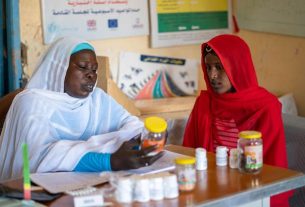|
Getting your Trinity Audio player ready...
|
The treatment of breast cancer has undergone a revolution in the last decade. The understanding of different types of cancer has deepened, and there is a growing range of treatments available for women diagnosed with a breast tumor. More than 90% of women diagnosed in the early stages of the disease will be cured. The treatments offered today belong to several sub-types of therapy: chemotherapy, hormonal therapy, targeted therapies, biological therapies, immunotherapy, radiation therapy, and a combination of these therapies. However, alongside the expanding variety of treatments, it is sometimes difficult to evaluate and determine the optimal therapy for a specific patient, both in terms of efficacy and side effects, besides trying the treatment that seems most appropriate.
“We recommend breast cancer treatments depending on the specific tumor subtype, for example, anti-hormonal treatments for a woman whose tumor is sensitive to hormones. This is based on the information available in the literature, results from clinical trials that included hundreds of patients, and on our personal knowledge and experience. In each subtype of breast cancer, there are several treatment protocols, each of which has both benefits and side effects, and, in a significant number of cases, there is no way to know in advance which protocol is more suitable for which patient,” explains Prof. Tamar Peretz, senior oncologist and former Director of the Sharet Institute of Oncology at Hadassah Medical Center.
Choosing the right treatment is very important because the effectiveness of different treatments is sometimes influenced by which treatment was given initially, how effective it was, and what its side effects were. In addition, the various treatments can have different side effects, some of them long-term, which can affect the quality of life of patients, many of whom are young women with an otherwise long-life expectancy.
An innovative and unique test performed by Curesponse, a pioneering oncology company, makes it possible to examine the response and sensitivity of a breast tumor from a specific cancer patient to a variety of possible treatments, including the effectiveness of drug combinations from different treatment types (for example, combining chemotherapy with a targeted biological therapy). This offers physicians a new and powerful tool that assists in making treatment decisions. Curesponse’s technology, called the cResponseTM test, examines various oncological treatments on a fresh sample from the patient’s tumor itself, taken by biopsy or surgery, and thus provides significant information on the effectiveness of the treatments (either as a single drug or drug combinations) tested in the laboratory within 14 business days. Initial studies suggest that the potential accuracy of the cResponse test to detect the sensitivity of the tumor to anticancer treatments is greater than 90%.
The test is covered in Israel by most private health insurance providers (according to the terms of each patient’s policy) and is included in the “Oncology Basket” provided to Clalit HMO members with platinum supplementary insurance.
Today, tumor genomic sequencing tests are widely used to identify specific mutations present in the tumor, against which specific targeted therapies exist. However, not all patients respond to these treatments, and genomic testing cannot always predict how each patient will respond to other types of treatments – whether its chemotherapies, hormone therapies, biological therapies without a specific target mutation, or immunotherapy treatments designed to activate the immune system to target and destroy the tumor. Furthermore, there is sometimes more than one targetable mutation in the tumor, and the physician must choose a treatment or a combination of treatments that will be most effective.
In the treatment of breast cancer, different options of therapy can be effective (chemotherapy, hormone therapy, immunotherapy, and targeted therapies), and the cResponse test can evaluate the sensitivity of the specific tumor to a variety of anticancer drugs on the tumor itself, using a single drug or a combination of several drugs. Curesponse’s unique technology, based on the research discoveries of Prof. Ravid Straussman from the Weizmann Institute of Science, enables tumor tissue, which includes cancer cells, immune cells, blood vessels, and other cells that make up the tumor microenvironment, to continue living in laboratory conditions. After the tumor sample is treated with the various drugs the oncologist is considering, a unique pathological evaluation, which includes the use of artificial intelligence, is performed to identify which treatment approach will be most effective in eliminating cancer cells – that is, which treatment the tumor is most sensitive to.
Curesponse’s platform also includes a rapid genomic sequencing test that makes it possible to identify actionable genetic mutations which are then used for selection of appropriate targeted therapies. These are then tested in parallel or in combination with conventional chemotherapy or hormonal drugs.
Prof. Peretz says that oncologists treating women with breast cancer may sometimes have to choose between alternative treatment approaches at different stages of the disease. “There are cases where we want to give patients pre-operative therapy prior to surgery” she explains. Sometimes the goal of pre-operative treatment is to reduce the lump in the breast and thus a lumpectomy (partial surgery of the breast that removes the area of cancer and some of the surrounding breast tissue) will be sufficient instead of a mastectomy (complete surgical removal of the breast). Occasionally, the goal is to reduce or eradicate a tumor that spread to the axillary lymph nodes, in order to try to reduce the extent of the surgery in the axilla, a procedure that significantly increases the risk of developing lymphedema (swelling of the arm) and impaired function in the operated arm. “There are different protocols for pre-operative treatment, and each has different expected side effects, and the question is which of the treatments will be most effective for a specific patient. The Curesponse test can help recommend the optimal treatment for each patient,” Prof. Peretz explains.
Even after surgery to remove the tumor is performed, the treating physicians may face a dilemma as to what is the optimal recommended complementary (adjuvant) treatment, which will be most effective in preventing the recurrence of the disease, the development of metastatic cancer, and has minimal side effects for the specific patient. “In every decision, the benefit must be weighed against possible harm, and every drug has potential harm,” explains Prof. Peretz. She recalls a patient who was diagnosed with early breast cancer and who suffered from a medical condition that could develop into peripheral neuropathy. One of the chemotherapy drugs that is common as adjuvant therapy could cause similar side effects, worsening the patient’s symptoms, while another drug would not. “The cResponse test allowed me to examine and compare the efficacy of conventional medications, and to assist in an informed recommendation of the preferred treatment for this specific patient.”
A further dilemma is the scenario when the treatment is given at an advanced stage of the disease and the cancer has already spread to other organs. “In such a situation, in many cases our goal is to achieve the longest possible life expectancy, while minimizing the suffering and side effects from the tumor itself and from oncological treatments,” says Prof. Peretz. “In such cases, there is a choice between several treatment options, including the possibility of administering combinations of drugs that theoretically are more advantageous, and the goal is to choose the most effective treatment that is accompanied by the least possible side effects.” For example, in a patient who has significant bone marrow suppression and low blood counts due to previous treatments, the cResponse test can help the oncologist choose between two treatments with similar effectiveness and avoid medications that can cause greater damage to the bone marrow. Prof. Peretz also says, “when dealing with metastatic breast disease, there is also a debate about the possibility of combining different drugs, without the literature highlighting an unequivocal decision one way or the other”. She adds, “Unlike math, when combining drugs, we know that one plus one doesn’t always equal two. Sometimes it’s worth three and sometimes it’s one and a half.”
For more information regarding Curesponse and the cResponse technology for personalized cancer treatment, please visit our website: www.curesponse.com
Or contact us at: [email protected]
This article was written in cooperation with CURESPONSE



